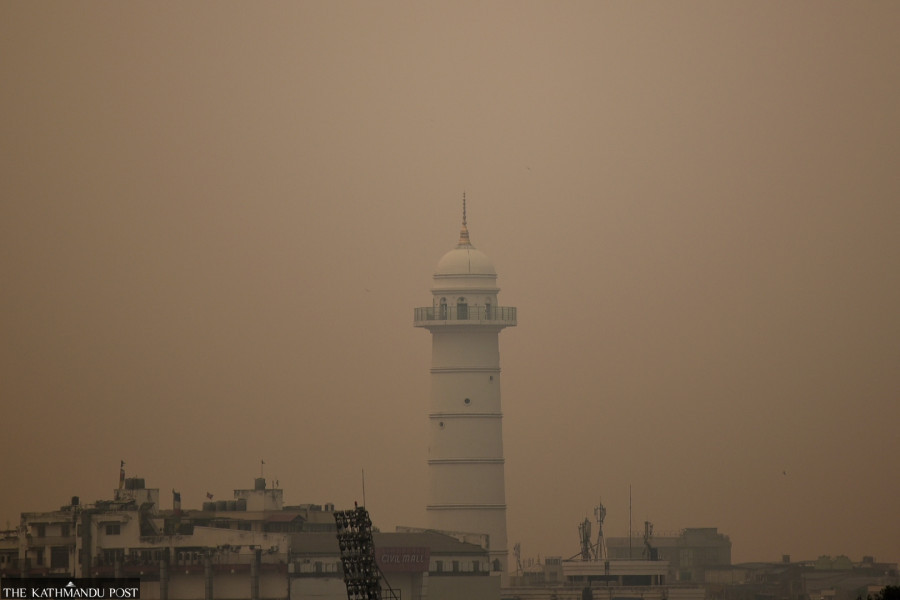Editorial
Burdens of bad air
While we do well in air quality monitoring, there is a gap in our mitigation measures.
Air pollution has plunged the world into a global public health crisis, and Nepal is no exception. The air we inhale for survival is one of the leading causes of illness, as reported by The Lancet, a medical journal. Respiratory diseases like pneumonia, bronchitis, asthma and chronic obstructive pulmonary disease have become all too common now. Besides these, ulcers, lung and intestine cancer, kidney diseases, heart problems, and so on are attributed to bad air. The vulnerability of children, women, the elderly and underrepresented groups to air pollution adds to the urgency of its mitigation.
The impact of toxic air is particularly harsh on Nepalis as our federal capital, Kathmandu, often tops the list of most polluted cities globally. Only a few weeks ago, Pokhara Metropolitan City’s air was unbreathable for several days. The southern plains met the same fate. This poor air quality has reduced our life expectancy by a staggering 4.6 years, as per the report by the Air Quality Life Index of the Energy Policy Institute at the University of Chicago. The situation is worse in nine southern districts (Mahottari, Rautahat, Dhanusha, Sarlahi, Bara, Parsa, Saptari, Siraha and Rupandehi). These areas, where air pollution is cutting lives short by 6.8 years, are affected mainly by India’s heavily polluted northern plains.
As we faced yet another air pollution crisis this year, patients with respiratory illnesses flooded the hospitals across the country. For instance, as per a recent report in the Post, in its two days of weekly OPD clinics, more than 600 people with respiratory illness reportedly visit the Teaching Hospital in Maharajgunj, Kathmandu. Despite this, the government’s recent plans and policies didn’t address the crisis. We need not scratch our heads to understand why we still do not have a national standard for annual average particulate matter. Nepal exceeds the World Health Organization’s particulate matter recommendation, i.e., PM2.5, by 15 times, taking a toll on approximately 40,000 lives annually.
Countries around the world have been trying their best to curb air pollution. Take our northern neighbour, China, which decreased toxic air by 42.3 percent between 2013 and 2021. A 2023 study by the University of Chicago suggests that if the country continues at the same pace, it will increase the average life expectancy of its people by 2.2 years. If Nepal meets the WHO guidelines and reduces the PM level, it can add 3.5 years to the lives of people living in Kathmandu. Even India and Pakistan are taking this matter seriously. This should inspire our leaders to take immediate national and transboundary actions to prevent deaths related to air pollution.
Our current approaches to tackling this crisis are far from adequate. Even when the air pollution level rises, our focus centres mainly on Kathmandu, and we are too myopic to see its effects on the southern plains. Be it the capital or other districts, they should get equal priority, as clean air is a fundamental right of every citizen. We need nationwide awareness campaigns to mitigate the deadly wildfires, toxic air emanating from vehicles and industries, as well as open waste-burning. While we fare better in air quality monitoring than other countries facing this crisis, there is a critical gap in mitigation measures. The policy gap in air pollution should be rectified before it is too late.




 15.12°C Kathmandu
15.12°C Kathmandu














